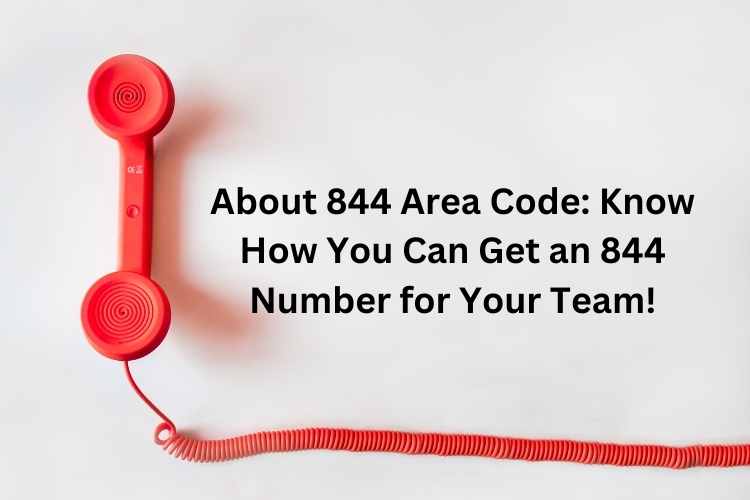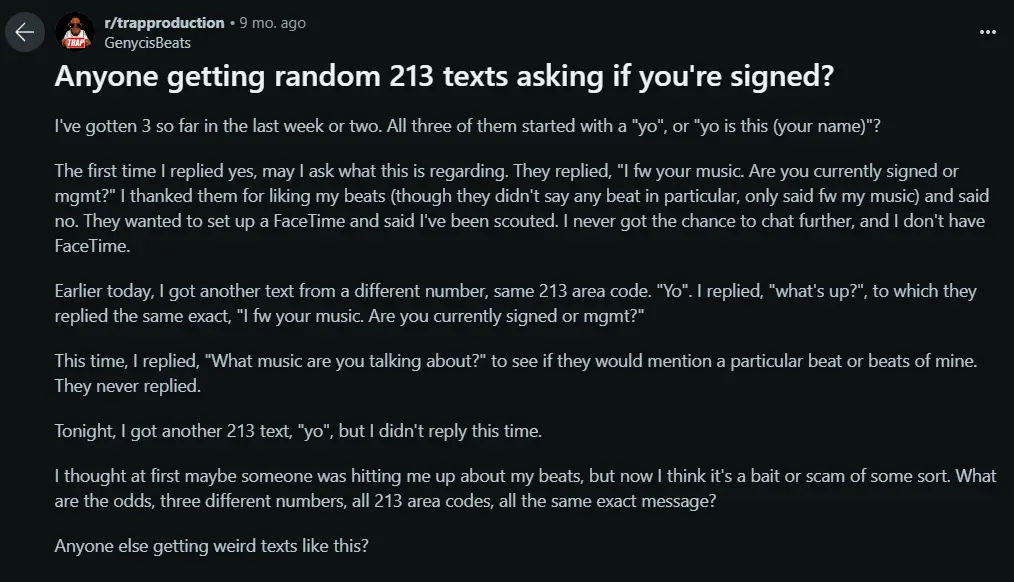In the world of telecommunications, receiving a text message from an unfamiliar number can be perplexing. The 213 area code text message has sparked curiosity among many users, especially those unfamiliar with its origins. This article aims to demystify the 213 area code, exploring its significance, geographical coverage, and the potential reasons behind receiving such messages.
As technology continues to evolve, understanding phone numbers and area codes has become increasingly important. Whether it's for personal or professional purposes, knowing where a text message originates from can provide valuable insights. In this guide, we will delve into the details of the 213 area code, its history, and what it represents in today's digital landscape.
By the end of this article, you will have a comprehensive understanding of the 213 area code text message phenomenon. Whether you're concerned about potential scams or simply curious about the origins of the message, this guide will provide you with all the necessary information.
Read also:Treadmill Tail Unveiling The Phenomenon And Kelsey Kanes Journey
What is the 213 Area Code?
The 213 area code is one of the original area codes established in 1947 as part of the North American Numbering Plan (NANP). It primarily serves the city of Los Angeles, California, and surrounding areas. This area code is significant due to its association with one of the largest metropolitan areas in the United States.
Over the years, the 213 area code has undergone changes due to the increasing demand for phone numbers. Despite the introduction of overlay area codes like 323 and 562, the 213 area code remains a prominent identifier for the central business district of Los Angeles.
Geographical Coverage of the 213 Area Code
The 213 area code covers a wide range of neighborhoods in Los Angeles, including Downtown LA, Koreatown, and the University of Southern California (USC) area. Its reach extends to significant landmarks and business hubs, making it a crucial identifier for communication within the region.
- Downtown Los Angeles
- Koreatown
- USC Area
- Exposition Park
Why Are You Receiving a 213 Area Code Text Message?
Receiving a text message from the 213 area code can occur for various reasons. It may be a legitimate communication from a local business, government agency, or even a friend or family member residing in the area. However, it is essential to remain vigilant, as scammers often use well-known area codes to gain trust.
Below are some common reasons why you might receive a 213 area code text message:
Legitimate Sources of 213 Area Code Messages
Many businesses and organizations in Los Angeles use the 213 area code for their communication needs. These messages could include:
Read also:Nadeshda Ponce The Rising Star In The Entertainment Industry
- Marketing promotions
- Event notifications
- Service updates
- Government alerts
Potential Scams and Spam
While most messages are legitimate, it is crucial to be aware of potential scams. Scammers often spoof well-known area codes to trick recipients into responding. Common tactics include:
- Phishing attempts
- Impersonation of official entities
- Unsolicited offers
How to Identify a Scam in a 213 Area Code Text Message
Identifying a scam in a 213 area code text message requires a keen eye for detail. Below are some red flags to watch out for:
- Requests for personal information
- Urgent or threatening language
- Unusual links or attachments
If you encounter any of these signs, it is best to ignore the message and report it to the appropriate authorities.
Steps to Take if You Receive a Suspicious Message
Upon receiving a suspicious 213 area code text message, consider the following actions:
- Do not click on any links
- Avoid sharing personal information
- Report the message to your service provider
The History of the 213 Area Code
The 213 area code has a rich history dating back to the early days of telecommunications. Established in 1947, it was one of the first area codes assigned to California. Over the decades, it has evolved to meet the growing demands of the Los Angeles metropolitan area.
As the population of Los Angeles expanded, additional area codes were introduced to accommodate the increasing number of phone lines. Despite these changes, the 213 area code remains a vital identifier for the central business district and surrounding neighborhoods.
Significant Events in the 213 Area Code's History
Throughout its history, the 213 area code has been associated with significant events and milestones. Some notable occurrences include:
- The establishment of the North American Numbering Plan
- The introduction of overlay area codes
- Advancements in telecommunications technology
Understanding the Technology Behind Area Codes
Area codes play a crucial role in the telecommunications infrastructure. They help route calls and messages to their intended destinations efficiently. The North American Numbering Plan (NANP) governs the assignment and management of area codes across the United States, Canada, and several Caribbean nations.
Each area code is assigned to a specific geographic region, ensuring that calls and messages are directed to the correct location. This system has been instrumental in facilitating communication across vast distances.
How Area Codes Are Assigned
The assignment of area codes follows a structured process designed to optimize network efficiency. Factors such as population density and geographic boundaries are considered when determining the coverage of an area code. This ensures that each region receives an adequate allocation of phone numbers.
Common Misconceptions About the 213 Area Code
There are several misconceptions surrounding the 213 area code. One common belief is that all messages originating from this area code are legitimate. While many are, as discussed earlier, scammers often exploit well-known area codes to deceive recipients.
Another misconception is that the 213 area code is exclusive to Los Angeles. While it primarily serves the city, its coverage extends to surrounding neighborhoods and communities.
Clarifying Misunderstandings
To address these misconceptions, it is essential to educate the public about the nuances of area codes. By understanding the technology and processes behind them, individuals can make informed decisions when receiving messages from unfamiliar numbers.
Best Practices for Handling 213 Area Code Text Messages
Handling text messages from the 213 area code requires a balanced approach. While it is important to remain cautious, it is equally crucial not to dismiss legitimate communications. Below are some best practices to consider:
- Verify the sender's identity
- Be cautious with links and attachments
- Report suspicious messages
Tools for Verifying Sender Identity
Several tools and resources are available to help verify the identity of a sender. Reverse phone lookup services, for example, can provide valuable information about the origin of a message. Additionally, checking with trusted contacts or organizations can help confirm the legitimacy of a communication.
Conclusion
In conclusion, the 213 area code text message phenomenon is a fascinating aspect of modern telecommunications. By understanding its origins, geographical coverage, and potential implications, individuals can make informed decisions when handling such messages. Remember to remain vigilant and follow best practices to protect yourself from potential scams.
We invite you to share your thoughts and experiences in the comments section below. Your feedback is invaluable in helping us improve and expand our content. Additionally, feel free to explore other articles on our site for more insightful information on telecommunications and related topics.
Table of Contents
- What is the 213 Area Code?
- Why Are You Receiving a 213 Area Code Text Message?
- How to Identify a Scam in a 213 Area Code Text Message
- The History of the 213 Area Code
- Understanding the Technology Behind Area Codes
- Common Misconceptions About the 213 Area Code
- Best Practices for Handling 213 Area Code Text Messages

